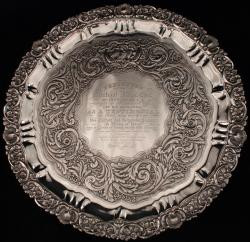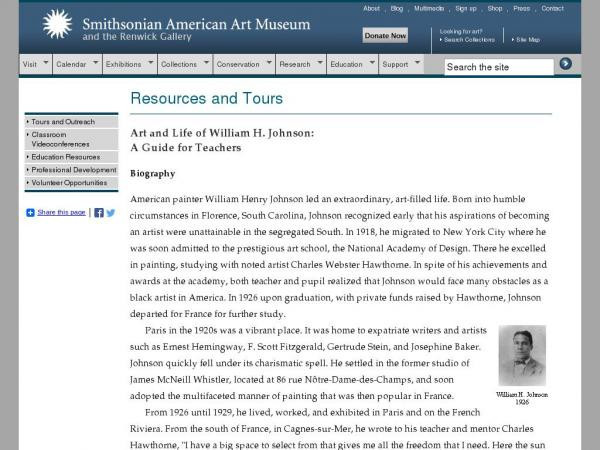Kate Harris
Social Studies teacher
Pittsburgh CAPA
Middle School (13 to 15 years old), High School (16 to 18 years old)
Teacher/Educator
Language Arts And English, Civics, Literature, Cultures, Economics, Social Studies, Geography, Writing, US History, Arts, Other
I'm a history-lover, art fan, and bookworm. I taught high school history (U.S. History and World Religions) for ten years in North Carolina, teach currently in Pittsburgh, PA, and am working to help teachers make the most of this new resource!
Kate Harris's collections
What do Anthropologists Do?
There are a number of lesson plans devoted to anthropology available from the Smithsonian. This collection links to several of the best lessons and teaching resources and, where necessary, provides short summaries of what each are, so teachers can easily use them in their own classrooms.
It is focused on lessons and resources appropriate for middle and high school classrooms. The last four resources reference the case of Ishi, originally described as "the last Yahi Indian," and an example of flaws in the early approach to anthropology. The Smithsonian housed his brain, which had been donated to science by the University of California, from 1917 to 2000, when it was repatriated to his tribe.
 Kate Harris
Kate Harris
18
How We Vote
<p>This collection invites users to explore how Americans have voted throughout our history and the innovations that have improved the voting process. Students will closely investigate images from the 19th and 20th century in order to determine potential flaws and improvements in the democratic process. Links to websites for additional reading are included as well as assessments and a possible extension activity. </p><p>Guiding questions:</p><p>-How has the process of voting changed in the last two centuries? Consider who, what, when, where, why, and how when answering this question.</p><p>-How have technological changes enhanced voting? What challenges remain?</p><p>Tags: civics, elections, campaigns, vote, ballot, ballot box, democracy, electoral process, change over time, cause effect</p>
 Kate Harris
Kate Harris
11
Vikings--Myths and Mysteries
<p>The Vikings have inspired many artists, writers, and filmmakers with their bravery and unique way of life. However, many misconceptions have developed and many facts are still unknown. In this collection, students will explore the website for the Vikings exhibit while taking notes on the included worksheet. Then, they'll evaluate three works of art (and a team logo) based on the Vikings to gauge how accurately they represent Viking life. Finally, they will be asked to create their own 2-D or 3-D object representing Viking life.</p><p>Tags: Norse, inquiry, Viking, Norway, Greenland, Iceland</p>
 Kate Harris
Kate Harris
7
Remembering the Holocaust
This collection looks at the way artists have used art, literature, and architecture to memorialize the victims of the Holocaust and explores the questions around how an artistic work, memorial, or museum can try to convey an understanding of genocide.
Questions to keep in mind as you observe each work:
1) What is the purpose of this memorial? Is it to honor, remember, educate others, or something else?
2) On what aspect of the Holocaust does this memorial focus?
3) What Jewish symbols are present? What national symbols are present? Are there human figures? Is it abstract? What other features do you notice about this memorial?
4) What is the setting of this memorial? How does that affect its purpose and design?
 Kate Harris
Kate Harris
24
Pittsburgh 1932
This is a collection of images and documents that give historical context for the poem "Pittsburgh 1932." The poem itself tracks a city's changing economic landscape during war years and the Great Depression.
Students can use this collection directly to explore the literature and history.
 Kate Harris
Kate Harris
25
Ancient Rome: Discover the Story
This collection includes objects and artifacts representing life in ancient Rome. Students are challenged to write a creative story or narrative based on the objects in the collection, illustrating Roman life. The last two resources in the collection are a worksheet that teachers may use to frame the assignment and a grading rubric for the assignment.
 Kate Harris
Kate Harris
12
Ancient Egypt: Sarcophaguses and Coffins
This is a collection of sarcophaguses and coffins from Ancient Egypt. The sarcophagus refers to the outer layer of protection for an important mummy, and would generally be carved or painted with images representing the deceased person. As you look through the collection, notice the difference between the sarcophaguses and coffins and pay attention to the kinds of images you see. What are common features that you might find on any sarcophagus? What kinds of things are different depending on who it is that is buried?
 Kate Harris
Kate Harris
6
Ancient Egypt: A Variety of Artifacts
A topical collection to be used for student research projects.
 Kate Harris
Kate Harris
55
Ancient Egypt: Shabtis
This is a collection of shabtis, which were small images of people that had been cast with a spell and buried with notable ancient Egyptians. The spells were meant to get the figure to carry out manual labor or specific tasks in the afterlife. You may notice some shabtis carry a whip, indicating that they are "overseers" of ten laborers. As you look through these images, think about what kinds of characteristics they all have in common. What differences do you see? Pay attention to materials used to make them, size, and images or depictions on the shabtis.
 Kate Harris
Kate Harris
9
All You Need is Love
<p>The best of love-themed graphic design in the Smithsonian Institution's collections. </p>
 Kate Harris
Kate Harris
12
The Ramayana
<p>This teaching collection and student activity includes the resources necessary to teach an EDSITEment lesson on the Ramayana where students read closely to find examples of the Hindu concept of dharma. </p><p>Guiding questions are:</p><ul><li>What is <em>dharma</em>?</li><li>How does the <em>Ramayana</em> teach <em>dharma</em>, one of Hinduism's most important tenants?</li></ul><p>tags: Hinduism, Hindu, India, dharma, Ramayana, rama, epic, Vishnu</p>
 Kate Harris
Kate Harris
11
1950s Conformity and Counterculture
The 1950s were a period of post-war peace and prosperity. The growing economy and baby boom led to a culture of consumerism and growing Cold War tensions led to an embrace of all things American. This student activity includes a number of images reflecting the 1950s (most of them in postage stamp form). After investigating these images and evaluating how they support or challenge conformity, students are asked to research the counterculture that began to develop in the 1950s. The final assessment asks students to create a stamp image reflecting one of the people, events, or movements that pushed back against 1950s conformity. <br /><br />
Guiding questions:<br />
-What caused a sense of American conformity to develop in the 1950s? How was this feeling expressed?<br />
-What challenges to conformity existed in the 1950s?<br />
-Is it more "American" to conform or to rebel?
 Kate Harris
Kate Harris
19









